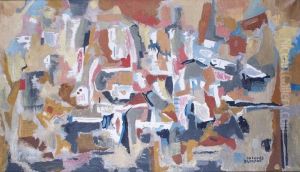Jacques Edme Dumont Paintings
Jacques Edme Dumont was a prominent French sculptor born on July 10, 1761, in Paris, France. He was part of a family of sculptors, with his father, Edme Dumont, also being an established artist, which helped Jacques Edme Dumont gain exposure to the art world from a young age. He trained under his father and later attended the École Royale des Éléves Protégés. Dumont's talent was recognized early on, and he won the prestigious Prix de Rome in 1788, which allowed him to study at the French Academy in Rome, housed in the Villa Medici.
During his stay in Rome, Dumont was influenced by the classical style, which was prevalent at the time. He studied the masterpieces of ancient sculpture and the works of Renaissance and Baroque artists. After returning to France, he continued to develop his style, combining classical elegance with a sense of naturalism.
Dumont's career spanned a tumultuous period in French history, which included the French Revolution and the Napoleonic era. Despite the political upheavals, he managed to maintain a successful career. He became a professor at the Académie des Beaux-Arts in 1818 and was made a Chevalier of the Legion of Honor in 1823. Among his notable works are the statues of 'The Count of Egmont and Horn' at the Louvre and 'Amphitrite' at the Fontaine de la Pyramide in the gardens of Versailles.
Jacques Edme Dumont's sculptures are characterized by their grace and the skillful execution of drapery. He was adept at conveying the textures of fabrics and the human form with precision and delicacy. His work is seen as a continuation of the classical tradition, adapted to suit the tastes of his contemporaries. Dumont passed away on August 28, 1844, in Paris. His legacy includes an oeuvre that reflects the transition between Neoclassicism and the emerging Romanticism in French sculpture.
